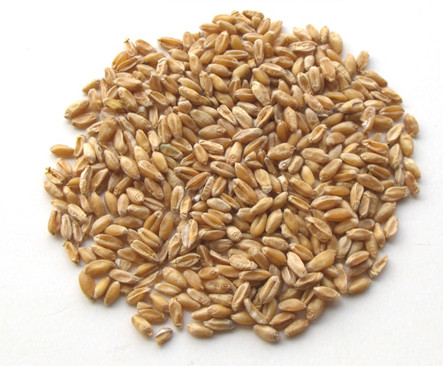浮小麥
Naming
Fu Xiao Mai (Fructus Tritici levis)——Ben Cao Meng Quan (Materia Medica Companion)
Origin
The immature seeds of annual herbaceous plant Triticum aestivum L., annual herb of family Gramineae.
Location
All parts of China.
Harvest
Collect the light and wizened wheat, sift the dusty, wash it in water and dry in sun.
The actual smell and taste
Slight flavor without bad smell.
Best quality
Even, no impurities, light, floating when washed.
Processing
Unprocessed or stir-baked.
Property
Sweet, slightly astringent, cool; heart meridian entered.
Actions
Strengthen superficies to check sweating, replenish qi, clear heat.
Indications
A. Spontaneous sweating, night sweat
This herb is sweet and cool and can be applied to stop deficient sweat, such as it in Du Sheng San rooted from Wei Sheng Bao Jian. It also can replenish heart qi and lung qi. It is a good herb to stringe fluid through nourishing heart and strengthening superficies to check sweating. It is indicated for spontaneous sweating and night sweat. It can be administrated singly by stir-baking to brown and smashing into powder. For spontaneous sweating due to qi deficiency, it is combined with herbs of stopping sweating and qi tonics, for instance, it is used with Huang Qi, toasted Mu Li, Ma Huang Gen in Mu Li San from He Ji Ju Fang. For night sweat due to yin deficiency, it is combined with herbs of stopping sweating, and yin-tonics, such as Wu Wei Zi, Bai Shao, etc.
B. Bone-steaming tidal fever
This hcrb can tonify qi, nourish yin and clear heat. For fever of yin deficiency and bone-steaming tidal fever, it is combined with heat-clearing and yin-nourishing herbs, such as Xuan Shen, Mai Dong, Sheng Di Huang, Di Gu Pi, etc.
Dosage and Administrations
Decoct 15~30 g. Smash into power, 3~5 g a time.

